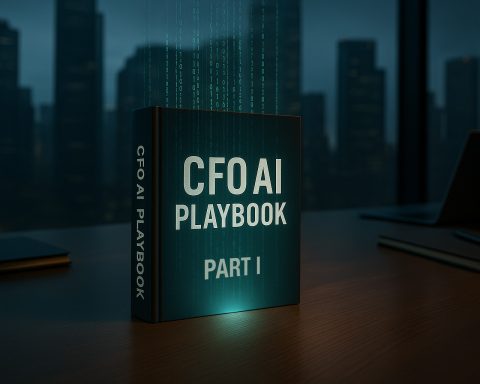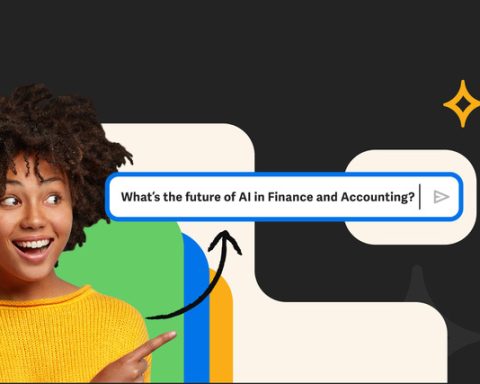Why choose project finance, over another type of financing – identifying the common elements of project finance is a worthwhile exercise to determine if project finance is really the best type of financing for your deal. If you cannot envision all of these elements of project financing being part of your deal, project finance is not the right financing.
Project finance funds long-term infrastructure, industrial projects, and public services using a nonrecourse or limited-recourse debt structure typically. The debt and equity used to finance the project is repaid solely from the cash flow generated by the project itself. The most attractive aspect is the diminished off-balance sheet risk offered to the company.
From a structuring perspective for those who are not familiar with the project finance structure, it is the most debated question, there are many parties involved for one thing and the project’s success hinges on the feasibility and cash flows. So, why do sponsors choose project finance as the preferred method of funding their projects, even though it is considerably more expensive than corporate financing? I believe this is a needs-based question whereby the company needing this type of financing for a long-term trajectory and successful growth path is typically in a better position given the nonrecourse or limited implications, and long-term project viability.
Some significant reasons for what compel sponsors to choose a project finance solution is as follows:
- Sponsors may want to insulate themselves from both the project debt and the risk of any failure of the project.
- Sponsors do not to have to consolidate the project’s debt on their balance sheets. This will, of course, depend on the particular accounting and/or legal requirements applicable to each sponsor. However, this may change with the growing trend, in many countries, to reflect substance over form, for a company’s balance sheet.
- There may be a genuine desire on the part of the sponsors to share some of the risk in a large project with others. This may be particularly true for smaller companies, whose balance sheets are simply not strong enough to raise the necessary finance to invest in a project on their own. This is a credible and viable means in which they can raise the necessary funding.
- A sponsor may be constrained in its ability to borrow the necessary funds for the project, either through financial covenants in its corporate loan documentation or borrowing restrictions in its statutes.
- Where a sponsor is investing in a project with others on a joint venture basis, it can be extremely difficult to agree on a risk-sharing basis. In such a case, investing through a special purpose vehicle on a limited recourse basis can have significant attractions.
- There may be tax advantages (e.g., in the form of tax holidays or other tax concessions – ability to use accelerated depreciation, deferred taxes, tax credits) in a particular jurisdiction, that make financing a project very attractive.
- Legislation, in particular jurisdictions, may indirectly force sponsors to follow the project finance route (e.g., where a locally incorporated vehicle must be set up to own the project’s assets).
This is not meant to be an exhaustive list but it is likely that one or more of these reasons will enter into the minds of sponsors, which have elected to finance a project on limited recourse terms.
Project finance, therefore is an attractive option for many companies with projects to execute. It also has appeals for the host government. These might include the following:
- Attraction of foreign investment,
- Acquisition of foreign skills,
- Reduction of public sector borrowing requirement by relying on foreign or private funding of projects,
- Possibility of developing what might otherwise be non-priority projects, and
- Education and training for local workforce.
KEY 2024 DEAL IN PROJECT FINANCE:
This past March 2024, a first-of-its-kind solar project by renewables developer in Japan, Shizen Energy for $10.9bn, funded by bank Societe Generale, the sole lead mandated arranger; this could serve as a template for the use of virtual power purchase agreements in project financing. With Japan’s ambitious goal of generating 36-38% of its electricity from renewables by 2030, on the way to reaching net zero emissions by 2050,this financing was executed.
In late 2023, Fukuoka-headquartered Shizen Energy unveiled a 20-year virtual power purchase agreement (VPPA) with US technology giant Microsoft to provide renewable energy from a solar farm under construction in Japan. It is the first time Microsoft, which operates data centers in Japan and aims to source 100% of its energy from renewables by 2025, has signed a long-term supply deal for renewable energy in the country. This is the first time that non-recourse project finance has been used for the combination of a VPPA for the sale of non-fossil fuel certificates (NFCs) with long-term contracted energy sales, including balancing.
Some of the key attributes of this deal include:
This non-recourse financing funds the development and construction of what is a landmark project on several fronts:
• For Shizen Energy Group – a developer, owner, construction contractor and operator of renewable energy – it is also the first project in Japan financed by an international lender.
• This is the first time that non-recourse project finance has been used for the combination of a VPPA for the sale of non-fossil fuel certificates (NFCs) with long-term contracted energy sales, including balancing.
• The new project’s size, which is the largest single-asset solar power plant under a corporate PPA to reach financial close, will help Japan make progress towards its renewable energy targets.
• The project is also the first to reach financial close since the Japanese government reformed the energy market in April 2022, navigating the changing market dynamics.
So why do sponsors choose project finance as the preferred method for funding their projects, even though it is considerably more expensive than corporate financing?
The best answer as to “why choose project finance” in a word is “liability”. Project financing is non-recourse or, at a minimum, limited recourse. This means no or limited liability in the event of default on the project loan or if the project undertaking fails.
WHO FUNDS PROJECT FINANCNGS: THE KEY STAKEHOLDERS
Individual and institutional investors contribute capital to the project in exchange for ownership or a share of the project’s returns. These returns can be in the form of dividends, interests, or capital appreciation upon the project’s successful completion. Investors provide a critical funding source, supporting the project’s long-term growth and success. Their interests align with the project sponsors, as they both seek to profit from the project’s achievements. By investing in project finance, investors diversify their portfolios and gain exposure to tangible assets with steady cash flows.
Lenders, typically financial institutions or banks, are key players in project finance as they provide the necessary capital to fund the project’s development and construction. Before extending credit, lenders thoroughly evaluate the project’s feasibility, profitability, and potential risks. They assess factors such as projected cash flows, the project’s economic viability, and the sponsor’s track record. By offering loans or credit facilities, lenders play a pivotal role in mitigating large-scale projects’ high initial capital requirements. They collaborate with sponsors to structure debt in a way that suits the project’s needs and provides an attractive risk-return profile to investors.
Government Agencies also play a vital role in project finance by supporting the project’s development and execution. They contribute through regulatory approvals, permits, and sometimes financial incentives, such as tax breaks or subsidies. The involvement of government agencies ensures that projects comply with legal and environmental requirements, enhancing their long-term sustainability. Furthermore, government backing adds credibility and stability to the project, attracting more investors and lenders.
LEGISLATIVE IMPACT ON PROJECT FINANCING:
With November right around the corner, and billions involved in the electoral process, all agree on the importance of roads, bridges, ports, power and energy, telecommunications, and pipes and believe in infrastructure policy and project financings as a strong foundation and is good for economic growth. Besides, the most compelling argument I see is the legislation passed in 2021 with the Infrastructure Investment and Jobs Act (IJA) into law with $1.2 trillion legislation including $550 billion in spending since then. Through August 2024, about $480 billion in federal funding has been announced for more than 60,000 projects. Since the law’s passage in 2022, states with lower-rated infrastructure have received more funding than those with highly-rated infrastructure. The Inflation Reduction Act in 2022, authorized loans to upgrade or repurpose energy infrastructure, funding for clean energy projects, tax credits for buying electric vehicles, tax credits for producing clean energy products and components, and more.
G20 INFRASTRUCTURE HUB:
The World Bank, actively engages the private sector to create more sustainable infrastructure project financings across countries. This World Bank-supported multi-donor fund that helps developing countries strengthen policies, regulations, and institutions that enable sustainable infrastructure with private sector participation. The World Bank represents significant presence in the public and private sector, as it relates to the infrastructure advisory sector and by extension in relation to project finance. Its relevance is extending the infrastructure agenda in project financings and through the Private Sector Advisory Council made of key institutional investors.
CONCLUSION – THE PROJECT FINANCE FINALE:
Originally, project financings or limited recourse lending was used to finance maritime voyages in ancient Greece and Rome, and then used in the late 1970s in the oil and gas industry and sometime around then also in infrastructure projects. Today, it has come a long way with the widespread application across all sectors and replacing some corporate finance structures and expanded to “non-recourse”.
As per Morningstar in January 2024, “it is believed the global project finance sector will stay largely unscathed from the slowing economy and elevated interest rate level. In 2024, the credit risk of the PF sector will remain stable because most project finance transactions are designed to insulate the cash flow and credit metrics from macroeconomic volatility under long-term revenue contracts with creditworthy counterparties.”
I believe that across most sectors PF remains dominant with digital infrastructure being a key one (explained simply it includes: networks, hardware, software, data centers, cloud computing, and cybersecurity systems – all business rely on this sector), and I agree with Morningstar that its increasing growth and investment in this sector will drive project financings in this sector in 2024.
Overall, in terms of coming to a conclusion on project financings, the reason to opt for this type is largely due to the costs vs. benefits analysis of the project and viability of the cash flows of the project while ensuring successful completion. Additionally, having worked with sponsors, I also believe that the sponsor relationship and support is instrumental and a deciding factor. The success of project financings hinge on the collaboration and synergies of the key stakeholders. Project sponsors provide the vision and drive, lenders supply the necessary capital, investors share in the rewards, and government agencies offer support and assurance. Each stakeholder’s role is essential in securing funding and ensuring the smooth execution of large-scale projects.






















